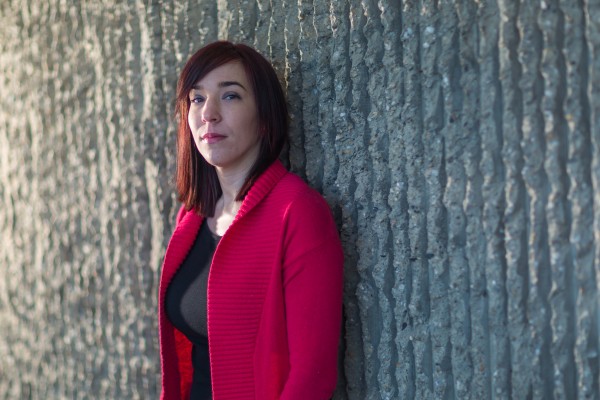UAF students developing app to help homeless youths
March 15, 2016
Jeff Richardson
907-474-6284
Like many people, Mindy Courter has gazed at her smartphone and wondered to herself,
“Why isn’t there an app for that?”
But unlike most of us, the University of Alaska Fairbanks graduate student did something
about it.
Courter, who studies counseling at the UAF School of Education, was previously a youth
advocate for Fairbanks Counseling and Adoption’s Street Outreach and Advocacy Program.
While working with homeless teens, she often thought there had to be more ways to
make them aware of vital services like food, clothing and safe shelter.

“Being that it’s the 21st century, I thought there would have been an app for that by now — essentially a directory of all the services you can utilize in your area,” she said.
Thanks to Courter and a team of UAF computer-science students, there soon will be. They’ve spent the semester working together to develop a new smartphone app to steer vulnerable youths toward nearby organizations that can help.
The app is a project for UAF’s Senior Capstone computer-science class, which donates its time to create custom software for businesses and organizations each year. In the past, the real-world learning opportunity has resulted in programs for Fairbanks Taxi, the city of North Pole and the National Weather Service.
Courter, who moved to Alaska from Kansas in October 2014 when her husband was stationed at Fort Wainwright, learned about the class after enrolling at UAF. Soon after she proposed the app, eight final-year UAF computer-science students were working on the approved project.
It’s been a learning experience for everyone, Courter said. She’s spent the past few months working to locate all of the relevant social-service organizations in Alaska, which will be programmed into the app to allow it to be used statewide.
Developing the app itself has also presented some challenges. It needed to be rudimentary, since the target audience tends to have low-budget phone contracts. Those youths may be unwilling to use an app that chewed through that limited data, the programmers figured.
“The app will be easy to navigate,” Courter said. “That way if someone’s in need and they’re in a vulnerable position, they’re not deterred by technology.”
The programming team needed to create and organize a website that had data about the state’s social service programs. The app will gather information from the site.
Thomas Cerny, a senior computer science student, called the process “a really big eye opener” but a rewarding experience.
“The process of creating that backbone and have it talk to an actual app, it’s awesome,” he said. “It’s too much fun.”
The project is due in April and is expected to be publicly available soon afterward. The developers hope it will be available on both Android and Apple platforms.
Becca Buckles, the director for Fairbanks Counseling and Adoption’s SOAP program, hopes the app will provide support to a population that needs plenty of it. She said steering youths toward services makes them less susceptible to drug dealers or sex traffickers.
“There’s a big need,” she said. “I think it’s very crucial that something like this exists.”


